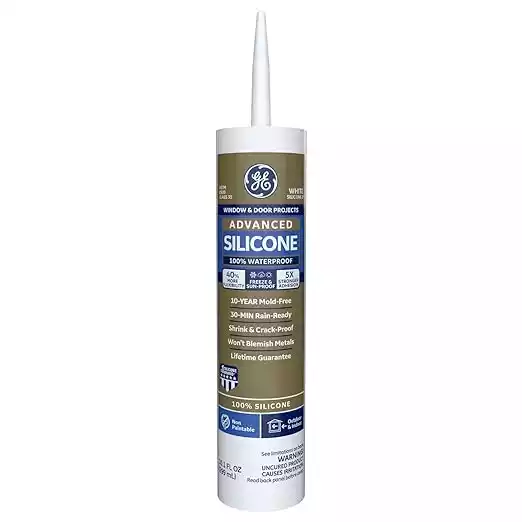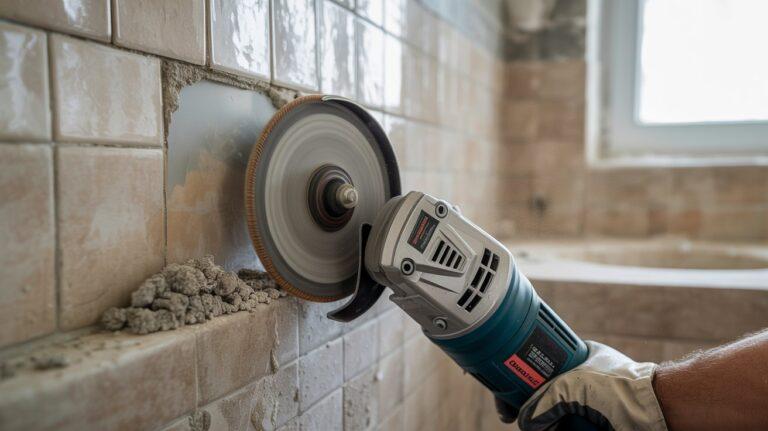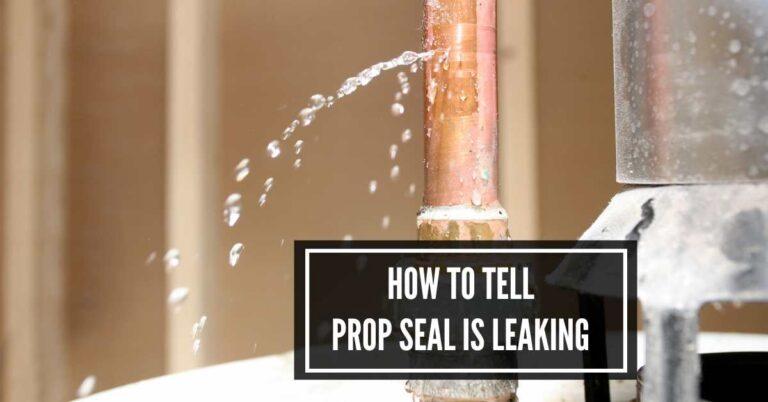Can You Use Silicone As Thread Sealant? Discover the Power of this Versatile Solution!
Yes, silicone can be used as a thread sealant. It is easy to apply and forms a tight seal.
Silicone is a versatile material commonly used in various industries and applications. One of its uses is as a thread sealant. When appropriately applied, silicone can effectively seal threads and prevent leaks. It is easy to use, as it comes in various forms, such as paste, tape, or liquid.
Silicone has excellent sealing properties and can withstand high temperatures and pressures. Moreover, it is resistant to water, chemicals, and other harsh conditions, making it suitable for different threads. Whether you are working on plumbing, automotive, or other projects that require a reliable seal, silicone can be a viable option.
Understanding Silicone As A Thread Sealant
When it comes to sealing threads, there are several options available. One of these options is silicone, a versatile and widely used sealant. This blog post will delve into silicone as a thread sealant, exploring what it is, how it works, and its benefits. Whether you’re a DIY enthusiast or a professional plumber, understanding the properties and applications of silicone can help you make informed decisions for your sealing needs.
What Is Silicone?
Silicone is a durable and flexible material widely used in various industries, including plumbing, automotive, and construction. It is a synthetic polymer of silicon, oxygen, carbon, and hydrogen atoms. Silicone sealants are designed to resist extreme temperatures, chemicals, and weathering, making them ideal for sealing applications.
How Does Silicone Work As A Thread Sealant?
When it comes to sealing threads, silicone offers several advantages. First and foremost, it creates a tight seal that prevents leaks, both liquid and gas. The silicone sealant fills the gaps between the threads, ensuring a secure and leak-free connection.
Silicone has excellent adhesion properties, meaning it sticks well to most materials, including metal and plastic. This ensures a reliable and long-lasting seal. Additionally, silicone is resistant to various chemicals and fluids, making it suitable for various applications, including plumbing, automotive repairs, and industrial settings.
Whether you’re working on a small DIY project or a larger-scale industrial repair, silicone as a thread sealant provides a reliable solution. Its flexibility and durability make it suitable for both low and high-pressure applications. With silicone, you can have peace of mind knowing that your threaded connections are secure and protected.
Silicone is a versatile and effective thread sealant that offers a secure and long-lasting seal. Its resistance to extreme temperatures, chemicals, and weathering makes it suitable for a wide range of applications. Whether you’re a professional plumber or a DIY enthusiast, silicone is a go-to option for sealing threads. Consider using silicone as your thread sealant for reliable results and efficient sealing.
Benefits Of Using Silicone As A Thread Sealant
Using silicone as a thread sealant offers several advantages over traditional options. Whether you are working on plumbing, automotive, or industrial projects, silicone provides long-lasting durability, high-temperature resistance, leak prevention, and versatility for various applications.

i) Long-lasting And Durable
Silicone serves as an exceptional thread sealant due to its long-lasting and durable properties. It forms a strong bond with metal surfaces, ensuring a secure and reliable seal that can withstand regular wear and tear.
ii) Resistant To High Temperatures
One of the notable features of silicone as a thread sealant is its ability to withstand high temperatures. Whether you are working with hot fluids or in extreme temperature environments, silicone maintains its seal, preventing leaks and providing peace of mind.
iii) Prevents Leaks And Seals Gaps
Silicone effectively prevents leaks and seals gaps between threaded connections. Its flexible nature allows it to fill in any irregularities or inconsistencies, creating a tight seal that keeps fluids or gases from escaping.
iv) Versatility In Various Applications
One of the key advantages of silicone as a thread sealant is its versatility. It can be used in a wide range of applications, including plumbing, automotive, and industrial settings. From sealing water pump or pipes to preventing air leaks in machinery, silicone provides a reliable solution for many sealing needs.
Tips For Using Silicone As A Thread Sealant
When it comes to thread sealing, silicone sealant can be a versatile and effective choice. Whether you are working with plumbing fixtures, automotive parts, or other threaded connections, using silicone as a thread sealant can help prevent leaks and create a secure seal. In this article, we will explore some helpful tips for using silicone as a thread sealant.
i) Choosing The Right Silicone Sealant
Choosing the right silicone sealant is crucial for achieving a successful thread seal. Opt for a high-quality silicone sealant that is specifically designed for thread sealing purposes. Look for a sealant that is labeled as “thread sealant” or “pipe thread compound” to ensure its compatibility with threaded connections.
Additionally, consider the type of fitting or material you are working with when selecting the silicone sealant. Some sealants are more suitable for particular materials, such as metal or plastic, so be sure to choose a sealant that is compatible with the surfaces you are working on.
ii) Preparing The Threads
Proper preparation of the threads is crucial for maximizing the effectiveness of the silicone sealant. Before applying the sealant, make sure the threads are clean and free from dirt, debris, and old sealant residue. Use a thread-cleaning brush or a rag to remove any contaminants from the threads.
In addition to cleaning, consider applying thread sealant tape or paste to the threads before using silicone sealant. This extra layer of sealant can further enhance the sealing capability and provide additional leak prevention.
iii) Applying Silicone Sealant
When applying silicone sealant as a thread sealant, it is important to use the right amount without overdoing it. Apply a thin, even layer of silicone sealant directly onto the cleaned and prepped threads. Be cautious not to apply excessive sealant, as it can squeeze out and create a mess or hinder the proper functioning of the threaded connection.
If using a tube of silicone sealant, consider using an applicator or your finger to spread the sealant evenly across the threads. This will help ensure a uniform and airtight seal.
iv) Proper Curing and Testing
After applying the silicone sealant, allow it to cure properly before testing the threaded connection. The curing time can vary depending on the brand and type of silicone sealant used, so be sure to follow the manufacturer’s instructions regarding curing time.
Once the sealant has fully cured, test the threaded connection for leaks. Turn on the water supply or apply pressure to the connection and check for any signs of leakage. If a leak is detected, tighten the connection further or apply additional sealant as needed.
Using silicone as a thread sealant can prevent leaks and ensure a secure seal. By choosing the right silicone sealant, properly preparing the threads, applying the sealant correctly, and allowing for proper curing and testing, you can maximize the effectiveness of silicone as a thread sealant in your projects.
Frequently Asked Questions
Can You Use Silicone Instead Of Thread Sealant?
Silicone can be used as an alternative to thread sealant. It provides effective sealing and prevents leaks in plumbing connections.
What Can I Use For Thread Sealant?
Teflon tape, pipe dope, and liquid sealants are the most commonly used thread sealants.
When Should You Not Use Silicone Sealant?
Silicone sealant is not recommended for use in environments where it will be continually underwater, on surfaces that are unclean, moist, or oily, with certain plastics or porous materials, and in areas subject to extreme temperatures.
Can You Seal Pipes With Silicone Sealant?
Yes, you can use silicone sealant to seal pipes effectively. Silicone sealant is a versatile and durable solution for sealing gaps and joints in pipes, providing a watertight and airtight seal.
Conclusion
Silicone can indeed be used as a reliable thread sealant. Its flexibility and resistance to high temperatures and chemicals make it an effective option for preventing leaks in various applications. Whether in plumbing, automotive, or industrial settings, silicone as thread sealant provides a durable and long-lasting solution.
Remember to choose the right silicone product and follow the manufacturer’s instructions for proper application. Enjoy leak-free connections with silicone thread sealant!

I am Robert Sandin, a professional sealing expert with a diverse range of expertise. From concrete to various other materials, I possess in-depth knowledge and experience in the art of sealing. On my website, I offer valuable tips and expert recommendations on sealing techniques and products for different materials. Whether it’s concrete, wood, metal, or more, I am committed to providing you with the guidance you need for successful sealing projects.






